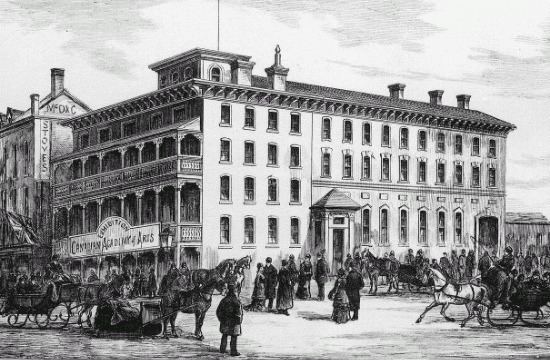Abbreviation RCA Legal status active | Formation 1880 | |
 | ||
Type Organizations based in Canada with royal patronage Purpose advocate and public voice, educator and network Headquarters Toronto, Ontario, Canada | ||
The Royal Canadian Academy of Arts is a Canadian arts-related institution founded in 1880.
Contents
1880 to 1890
The title Royal Canadian Academy of Arts was received from Queen Victoria on 16 July 1880. The Governor General of Canada, Sir John Douglas Sutherland Campbell, the Marquess of Lorne was its first patron. Lucius O’Brien, the painter was its first President.
The objects of the Academy as stated in the 1881 publication of the organization's constitution were three-fold:
In the same publication, two levels of membership were described; Academicians and Associates. No more than forty individuals could be Academicians at one time, while the number of Associates was not limited. All Academicians were required to give an example of their work to the collection of the National Gallery. They were also permitted to show more pieces in Academy sponsored exhibitions than Associates.
The inaugural exhibition was held in Ottawa and the first academicians inducted including the first woman academician, Charlotte Schreiber. Through the next 10 years, the academy held annual exhibitions often in cooperation with the regional artists societies. Exhibitions in Toronto were a joint project of the Academy and the Ontario Society of Artists, those held in Montreal were held in partnership with the Montreal Artists Association. Exhibitions were also held in St. John, New Brunswick and Halifax, Nova Scotia. Additional academicians and associates were added each year until the membership had more than doubled by 1890. Members were drawn from all areas of the country and included anglophones and francophones. Men continued to out-number women and those female members were identified as painters not as designers or architects.
As each academician joined, they donated an example of their work to the National Gallery of Canada, building the collection of the as yet unincorporated institution. A temporary home was found for the collection in a building next to the Supreme Court of Canada and the first curator, John W. H. Watts, RCA was appointed to begin organizing exhibitions.
The third objective—to encourage the teaching of art and design in Canada—was found more challenging to address with the financial resources available to them.
1891 to present
Canadian landscape painter Homer Watson was elected as an associate, became a full member and later president of the Academy.
The centennial year of the Academy was honoured by a 35 cent, 3 colour postage stamp. The stamp features an image of the original centre block of the Parliament Buildings and the text "Royal Canadian Academy of Arts, 1880–1980", with the name "Thomas Fuller", a member of the Academy and the Dominion Architect of Canada who had designed the original building.
Members
The Academy is composed of members from across Canada representing over twenty visual arts disciplines. This list is not inclusive. See also Category:Members of the Royal Canadian Academy of Arts.
Academy membership in 1907
Academicians
Associates
